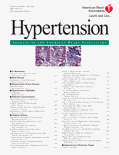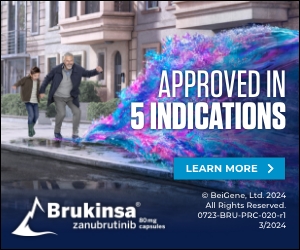As part of the celebration of U.S. Medicine’s 60th anniversary, we are profiling some of the remarkable achievements in federal medicine over the past six decades. In the sixth of that series, we are highlighting the seminal work of Edward D. Freis MD, former chief of the medical service at the Washington, DC, VAMC, whose pioneering study of high blood pressure changed not only the treatment of hypertensive diseases but more broadly ushered in the era of preventive cardiology and the widespread adoption of placebo-controlled clinical trials. Freis passed away in 2005.
U.S. Medicine’s 60th anniversary profiles to date have featured interviews with researchers who have dramatically changed the practice of federal medicine, but a comment during last month’s interview prompted an exception for Freis.
“Many people think Ed should have gotten the Nobel Prize for leading the pivotal study in hypertension that was done in the 1960s in the VA. It was the first study to show that reducing blood pressure in patients with hypertension in a randomized cardiovascular trial showed benefit—and it was a dramatic benefit,” William Cushman MD, former chief of the Preventive Medicine Section at the Lt. Col. Luke Weathers Jr. VAMC in Memphis, TN, and medical director, Department of Preventive Medicine, University of Tennessee Health Science Center, told U.S. Medicine.
Today’s discussions of hypertension tend to focus on optimal targets for control, with new studies regularly recommending ever-lower systolic and diastolic goals. In the 1950s and 1960s, however, much of the medical establishment considered high blood pressure to be a natural part of aging. Hypertension was seen as a way for the body to ensure that diseased organs received adequate blood flow.
Freis had studied several antihypertensive medications as a researcher at the DC VA and as director of the Cardiovascular Research Laboratory and professor of medicine at Georgetown University School of Medicine. Freis was also one of the first national VA senior medical investigators and head of the Cooperative Study Group.
“The decade from 1950 to 1960 was characterized by the introduction of new and effective drugs for reducing an elevated blood pressure. It still remained to be demonstrated, however, that such lowering of blood pressure favorably affected morbidity and mortality,” wrote Freis in JAMA in 1971 in connection with receiving the Albert Lasker Clinical Medical Research Award. “Definitive evidence, which could be obtained only from a well-controlled, prospective therapeutic trial, was urgently needed.”1
Convinced that the therapy could save lives, in 1963 Freis organized the randomized, double-blind, placebo-controlled Veterans Administration Cooperative Study on Antihypertensive Agents, which involved more than 17 centers. Slated to last 5 years, the study compared morbidity and mortality outcomes for treatment with a combination of agents used in previous VA hypertension trials vs. placebo in 523 male veterans with “benign” or “essential” hypertension, defined as diastolic blood pressure of 90 to 129 mm/Hg.
“Nobody was treating patients with diastolic blood pressure of 90 to 129,” noted Cushman. “If they had malignant hypertension [diastolic blood pressure of 130 mm/Hg or higher], which was much less common, then people would generally treat them.”
Of the total participants, 143 patients had average diastolic blood pressures prior to randomization of 115 to 129 mm/Hg. “Four of the 70 patients in the control group died, as a result of cardiovascular complications, as compared to none in the 73 treated patients,” Freis wrote.
In addition, 17 patients in the control group developed non-fatal, but serious complications—diastolic readings in excess of 130 mm/Hg, severe congestive heart failure, cerebral hemorrhage or disabling cerebral thrombosis—that required their removal from the study. Six others in the control group developed mild congestive heart failure, myocardial infarction or nondisabling strokes. In contrast, one patient in the treatment group left the trial for drug toxicity, which quickly reversed with a change in regimen. One other experienced a nondisabling stroke. In total, 27 participants in the control group experienced nonfatal cardiovascular events compared to one in the treatment group.
“The 115 to 129 mm/Hg diastolic group was dramatically benefited, so they stopped the trial for them after just a year and a half, with huge benefit, something you never expect to see in a study,” said Cushman. “And then, and they continued to follow the 90 to 114 diastolic groups and then stopped it early after a little over three years, showing a substantial benefit in that group as well.”
Among the 380 participants with diastolic blood pressure below 115 mm/Hg, 19 of those in the control group died vs. eight in the treatment group, with myocardial infarction, cardiac arrest and stroke being the most common causes of death for both groups. Researchers found that treatment reduced the risk of fatal or nonfatal major cardiovascular events in this group over a 5-year period from 55% to 18%. A subanalysis by age band found that for patients less than age 50, those 50 to 59, and those age 60 and older, the incidence of major complications was twice as high in the control group than in the treatment group.
“That was the first study that showed a benefit from treating to a lower goal and treating hypertension in general,” Cushman noted.
And that changed the national approach to cardiovascular health.
“His efforts to promote national and worldwide attention to the mass treatment of hypertensive patients initiated a new era of public health medicine, preventive cardiology,” wrote Edward Frohlich in his obituary for Freis in Hypertension. “It was Freis’ contributions that provided the impetus for the establishment of the National High Blood Pressure Education Program by the National Heart Lung and Blood Institute in 1972, the forerunner of other similar national and international programs.”3
Aside from the findings of the study, its structure also set a model for future research by pooling data across multiple centers to provide more robust statistical results. The first U.S. multicenter study to use a randomized, double-blind, placebo-controlled methodology, the VA Cooperative Study of on Antihypertensive Agents established the gold standard for research.
- Freis ED. The chemotherapy of hypertension. JAMA. 1971 Nov 15;218(7):1009-15. PMID: 4398938.
- Veterans Administration Cooperative Study Group on Antihypertensive Agents. Effects of treatment on morbidity in hypertension. I. Results in patients with diastolic blood pressures averaging 115 through 129 mm Hg. JAMA. 1967 Dec 11;202(11):1028-34. PMID: 4862069.
- Veterans Administration Cooperative Study Group on Antihypertensive Agents: Effects of treatment on morbidity in hypertension. II. Results in patients with diastolic blood pressures averaging 90 through 114 mm Hg. JAMA. 1970 Aug 17;213(7):1143-1152. PMID: 4914579.
- Frohlich ED. Edward D. Freis, MD (1912-2005). Hypertension. 2005 Apr 4;45(5).


